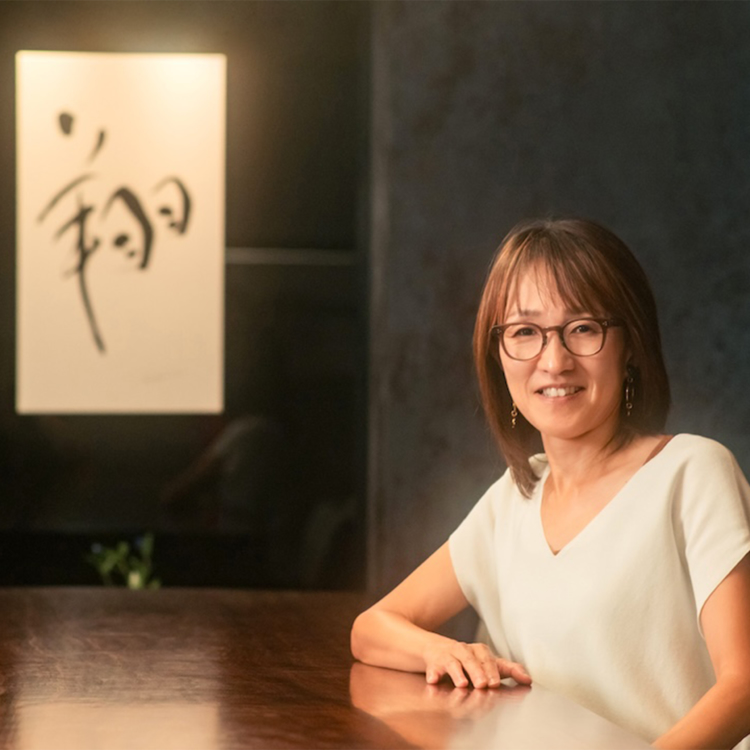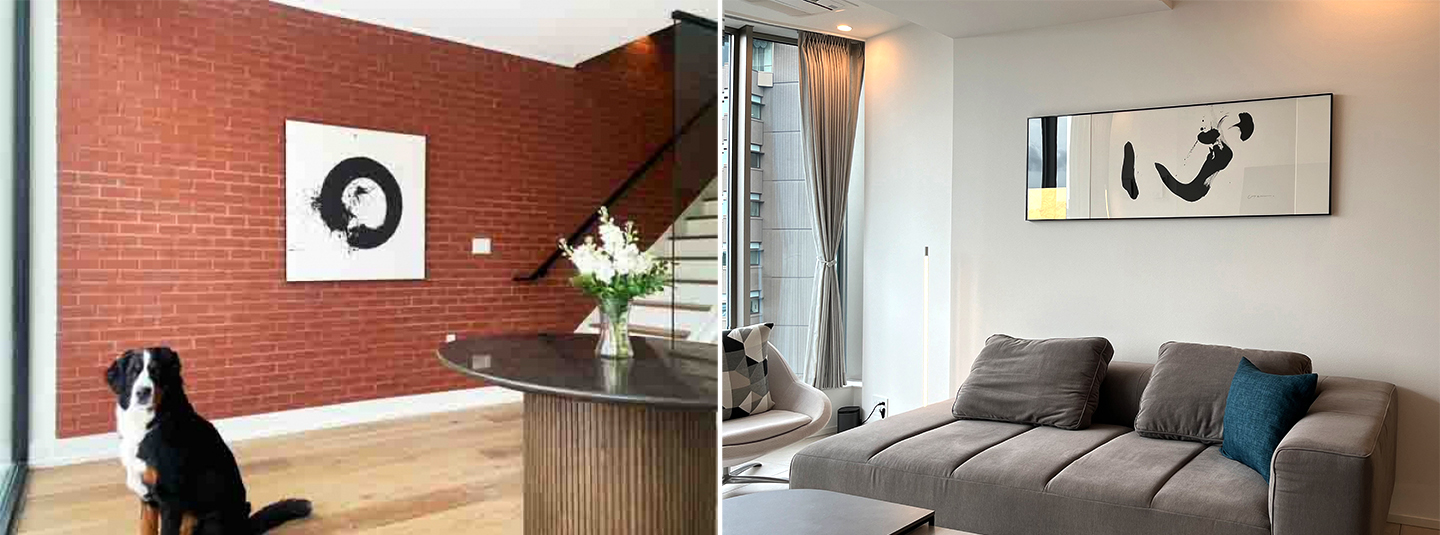

Calligraphy for Everyday Life: Novel Interior Design from Carré MOJI
2024.09.27
LIFE“When I first saw the works handled by Carré MOJI, I was shocked. I had been practicing calligraphy as a hobby, but unlike my own calligraphy, which merely followed my teacher’s examples, these works had expression and evoked a sense of scenery. The modern framing that complemented the works was also fantastic. I was amazed that calligraphy could be displayed as interior decor in this way, and I felt impelled to work toward spreading the idea.”
These are the words of Emi Takahashi, senior manager and interior coordinator at Carré MOJI, Japan’s only gallery and production company that proposes traditional calligraphy as interior art. Emi has been with the company for about 16 years now. Previously, she worked in a completely different field, but through her work at Carré MOJI, she developed an interest in interior design and even obtained a qualification as an interior coordinator. This was driven by her desire to delve deeper into Carré MOJI’s concept.
“Carré MOJI’s role is to offer calligraphy that customers would want to include in their interiors. While working with other coordinators, I wanted to better understand their needs, so I studied interior design more broadly. My job involves coordinating the walls where the calligraphy will be displayed. For example, when requesting a frame for a piece, I always consider the balance of the entire space where it will be hung before consulting the designer.”

At Carré MOJI, custom-made pieces created to meet customers’ requests account for more than half of the overall business. The nature of these requests varies greatly. Sometimes clients specify the character or calligrapher, while at other times, suggestions are made by the company. Emi’s crucial role is to communicate with the clients, draw out the images they have in mind, and convey those ideas to the calligraphers in a clear and understandable manner.
One of the most memorable orders involved the characters for the Japanese word tekito, meaning “as suits.” The client, a doctor, wanted something that would help him relax at home after experiencing daily tensions where mistakes were not an option. Emi approached a calligrapher known for works that convey warmth and healing. This commission was not just about the meaning of the characters but also about resonating with the client’s feelings.
“Currently, 12 calligraphers are affiliated with Carré MOJI. While we pursue perfection in each piece, as a service that caters to diverse client requests, it’s crucial to identify the strengths of each calligrapher. We need to ensure they can work at their best and produce pieces they feel good about.”

Sometimes, Emi visits clients’ homes to suggest the size and placement of the artwork to maximize the space. She brings several proposals, holds them up against the intended wall, and consults with the client, always striving to create a space where the client can be fully satisfied. She even attends the actual installation of the finished pieces, moments she says are nerve-wracking no matter how many times she experiences them.
In 2014, Carré MOJI was in charge of creating artworks for the rooms of Aman Tokyo, a globally renowned luxury hotel. Emi looks back on this project as a major turning point for Carré MOJI in its mission to showcase decorative calligraphy to the world. As the pandemic has settled, more visitors from overseas are visiting the gallery in person.
“We often hear from people who say they wanted calligraphy but found it difficult to commission a calligrapher directly, or that having a selection of calligraphers to choose from made it easier to place an order.”
In traditional Japanese houses, hanging scrolls were once displayed in tokonoma alcoves, but with changing lifestyles, calligraphy has found itself at a remove from everyday spaces. However, Emi says that ink-drawn calligraphy is a surprisingly good fit for any space.
“We receive photos from overseas clients who have displayed our calligraphy in their homes. It matches with Nordic, mixed, and European-style interiors. I think the charm of ink and lines, along with the power of negative space, accommodates the shifting feelings of the viewer. I hope many people can experience the comfort of having calligraphy in their daily lives, even with just a small piece.”

Currently, Carré MOJI is actively participating in exhibitions abroad in response to an increase in inquiries from overseas. Emi also visits such venues and feels the tremendous response. They are also working on revamping their website for the international audience to make their message and images more accessible.
“We want to increase opportunities for people abroad to see our works in person and help more people understand the comfort and beauty of displaying calligraphy. As it becomes more widely recognized overseas, it would be interesting if, in a way, it is ‘re-imported’ back to Japan, increasing its presence here even more.”
Carré MOJI and Emi Takahashi have found new possibilities in the world of calligraphy. Their journey to bring Japan’s aesthetic legacy to spaces worldwide has only just begun.






